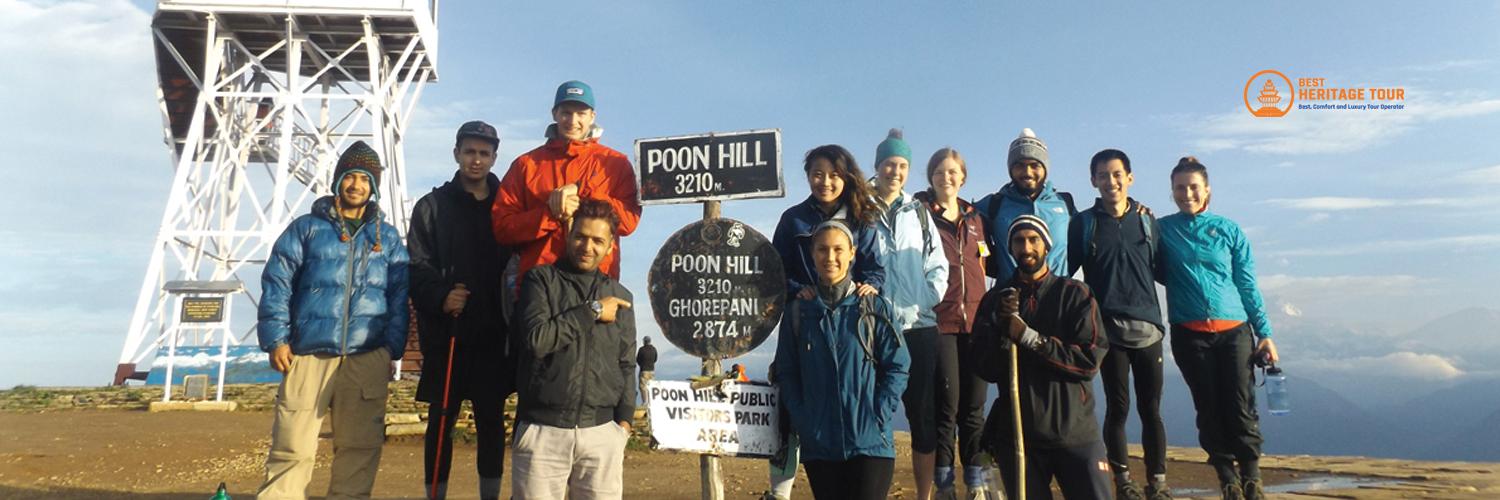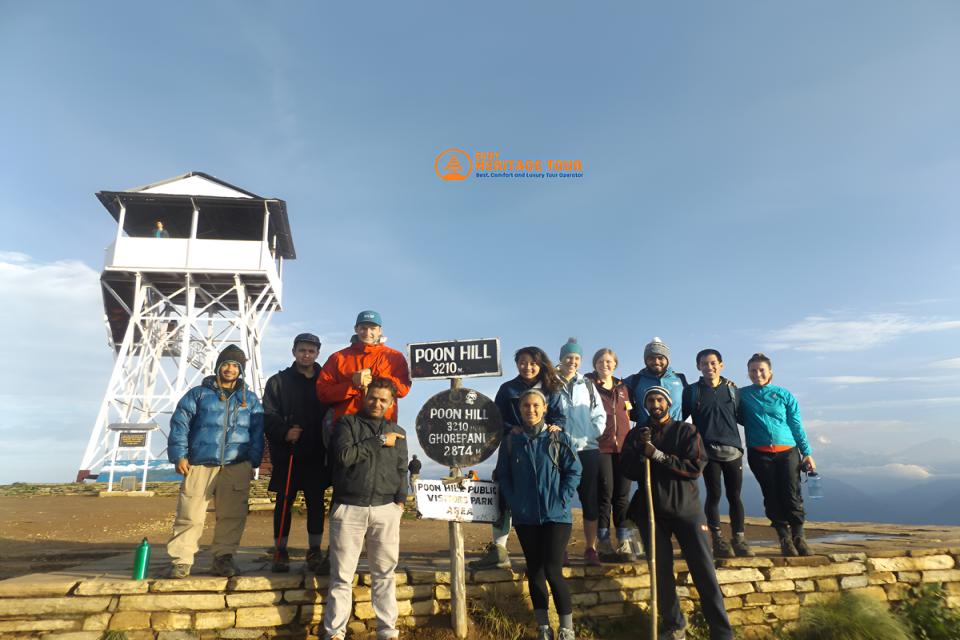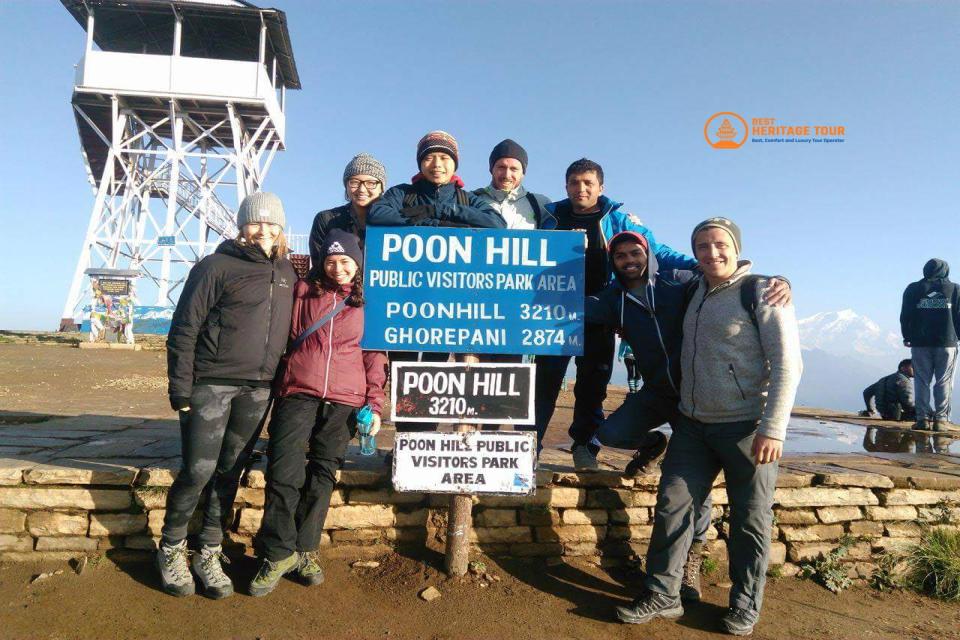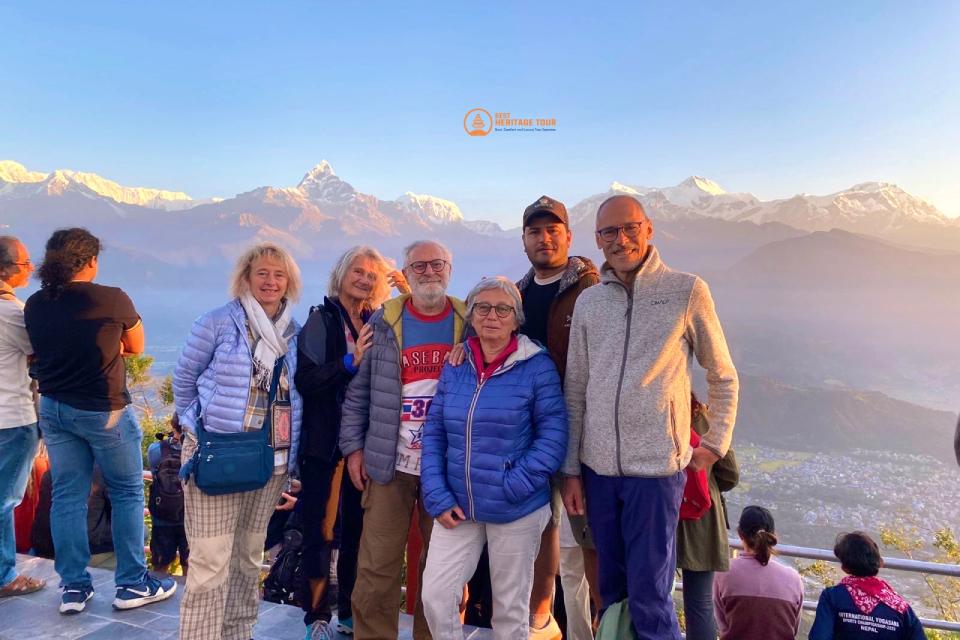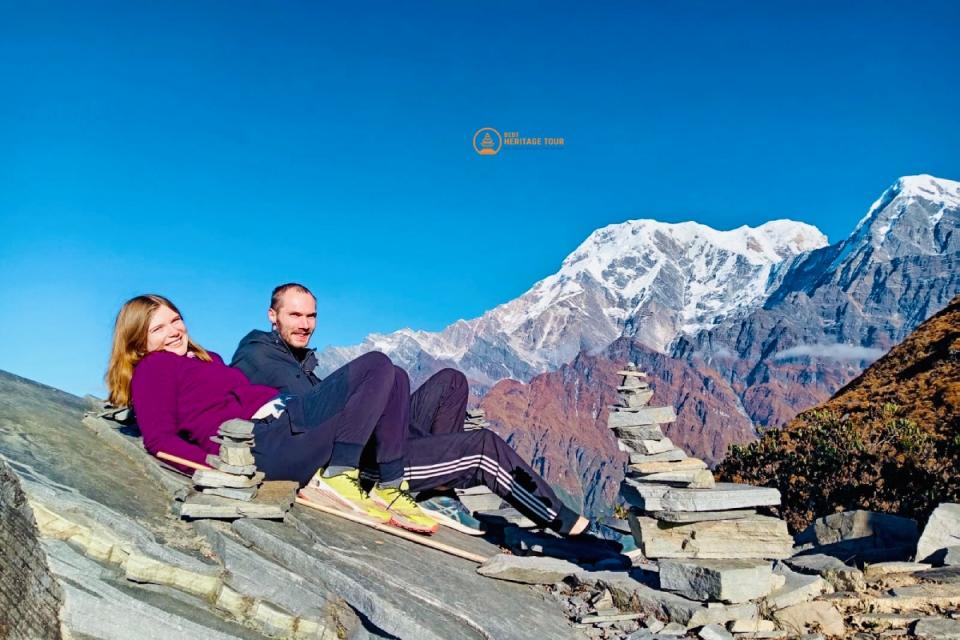The Ghorepani Poon Hill Trek is one of Nepal’s most iconic short treks, famous for its rich Gurung and Magar culture, well-established trails, and especially for the jaw-dropping sunrise view over the Annapurna and Dhaulagiri ranges from Poon Hill (3,210 meters). While this trek is considered a year-round destination due to its moderate altitude and accessible terrain, the timing of your journey can significantly impact your experience.
So, when is the best time to do the Ghorepani Poon Hill Trek?
In this guide, we’ll explore the ideal trekking seasons, what to expect during each, how weather can affect your journey, and help you choose the right time based on your preferences. Whether you're starting from Kathmandu or Pokhara, Best Heritage Tour offers two customizable trekking packages designed to fit your schedule, pace, and expectations - while ensuring safety and comfort throughout.
Let’s dive into the seasonal guide to help you make an informed decision.
Overview of Seasons for Poon Hill Trek
Nepal has four distinct trekking seasons:
|
Season |
Months |
Trekking Conditions |
|---|---|---|
|
Spring |
March - May |
Clear skies, blooming rhododendrons, mild temperatures |
|
Summer/Monsoon |
June - August |
Heavy rain, slippery trails, limited views |
|
Autumn |
September - November |
Crystal-clear skies, ideal weather, busiest season |
|
Winter |
December - February |
Cold mornings, snowy paths at higher elevations, fewer crowds |
Let’s break these down in more detail.
Spring Season (March to May): Rhododendron Blooms and Clear Views
Spring is arguably the most popular time to trek the Poon Hill trail and for good reason.
Highlights:
-
Clear mountain views nearly every day.
-
Warm daytime temperatures.
-
Blooming rhododendron forests that color the trail in shades of red, pink, and white.
-
Longer daylight hours for extended hikes.
What to Expect:
The skies are generally crisp and blue, offering stunning visibility of snow-covered peaks like Annapurna South, Machhapuchhre (Fishtail), and Dhaulagiri. The forest trails become especially magical with rhododendron blossoms in full bloom. The temperatures are moderate - cool in the mornings and evenings, and pleasantly warm during the day.
Pros:
-
Lush greenery and blooming flowers
-
Great visibility for mountain views
-
Ideal daytime trekking temperatures
Cons:
-
Slightly more crowded than winter
-
Possible pre-monsoon showers in late May
If you're looking for the perfect blend of scenery, comfort, and stable weather, Spring is ideal.
Summer / Monsoon Season (June to August): Lush Landscapes, But Be Cautious
The monsoon season brings rain to most parts of Nepal, including the Annapurna region. While trekking is still possible, this time comes with both challenges and opportunities.
Highlights:
-
Fewer tourists - more solitude.
-
Lush green hillsides and waterfalls.
-
Budget-friendly accommodations.
What to Expect:
Trails can be slippery and muddy, and leeches are common in forested areas. Frequent cloud cover may obscure mountain views. However, the rain brings vibrant vegetation and a peaceful atmosphere to the region. This is a great time for those who don’t mind getting a little wet and enjoy quiet trails.
Pros:
-
Quiet trails, almost no tourist traffic
-
Deep green, lush landscapes
Cons:
-
Poor visibility due to clouds and fog
-
High chance of rain and leeches
-
Risk of landslides in some areas
Best Heritage Tour ensures added safety and comfort with knowledgeable local guides, rain gear recommendations, and flexible planning during this season.
Autumn Season (September to November): The Classic Trekking Window
Autumn is considered the best overall time to trek in Nepal. After the monsoon rains, the air becomes clean and fresh, revealing crystal-clear mountain views.
Highlights:
-
Stable, dry weather.
-
Incredible sunrise and mountain panoramas.
-
Ideal trail conditions.
What to Expect:
Autumn provides the best visibility of the Annapurna and Dhaulagiri ranges, along with mild temperatures and clear blue skies. The trails are livelier, filled with trekkers from around the world, and the villages you pass through are vibrant and festive - especially during local festivals like Dashain and Tihar. This is the perfect season for first-time trekkers or photographers hoping to capture Himalayan magic.
Pros:
-
Best mountain visibility
-
Comfortable weather
-
Cultural experiences and festivals
Cons:
-
Crowded trails and accommodations
-
Higher demand for guides and permits
Winter Season (December to February): Cold, Quiet, and Serene
Winter offers a totally different vibe: quiet trails, snow-covered villages, and a peaceful trekking experience.
Highlights:
-
Fewer crowds.
-
Possibility of snow at higher elevations.
-
Clear skies and dramatic landscapes.
What to Expect:
While temperatures drop significantly - especially in the mornings and evenings - the days are often sunny and bright. With proper winter gear, this can be a rewarding season, especially for those looking to escape the busy trekking seasons.
The route is still accessible in winter, and Best Heritage Tour ensures heated accommodations where possible, expert guiding, and appropriate cold-weather logistics.
Pros:
-
Quiet trails and empty lodges
-
Snow-capped scenery and crisp air
-
Cheaper rates in some places
Cons:
-
Very cold mornings and nights
-
Possibility of snow-covered or icy trails
Season Comparison Table
|
Season |
Weather |
Views |
Crowd Level |
Trail Conditions |
Recommendation |
|---|---|---|---|---|---|
|
Spring (Mar-May) |
Mild, pleasant |
Excellent |
Moderate |
Dry, scenic |
Most colorful season |
|
Summer (Jun-Aug) |
Wet, humid |
Often cloudy |
Low |
Slippery, lush |
For adventurous trekkers |
|
Autumn (Sep-Nov) |
Cool, clear |
Excellent |
High |
Perfect |
Best all-around season |
|
Winter (Dec-Feb) |
Cold, dry |
Clear |
Low |
Snowy at times |
Peaceful, serene experience |
Choosing the Right Time Based on Your Interests
-
For clear skies and stunning photography: Go for Autumn or Spring.
-
For fewer crowds and budget travel: Consider Winter or Summer.
-
For cultural immersion (festivals): October is best for Dashain and Tihar.
-
For rhododendron forests in bloom: Mid to late Spring (April) is perfect.
Whether you're a solo traveler, a couple, or part of a group, there's a season that matches your style.
Weather and Safety Considerations
-
Altitude: Poon Hill (3,210m) is a moderate-altitude trek, making it suitable for most people. However, weather can still influence your comfort level.
-
Clothing: Always pack in layers, regardless of season. Include rain gear in monsoon and insulated jackets in winter.
-
Trail Safety: Best Heritage Tour's guides monitor weather forecasts and adjust itineraries as needed to ensure safety.
-
Travel Insurance: Recommended year-round, especially during off-peak seasons.
Final Thoughts: When Will You Go?
The Ghorepani Poon Hill Trek offers a unique adventure in every season - whether you’re chasing clear skies, vibrant blooms, or quiet, snowy trails. The key is choosing the time that best suits your preferences and being well-prepared for the conditions.
No matter when you go, Best Heritage Tour ensures you’ll have an expertly guided, safe, and memorable experience with personalized service from beginning to end.
Book Your Poon Hill Adventure Today!
Ready to witness the sunrise over the Himalayas? Choose your ideal package below and let us handle the rest:
Poon Hill Trek from Kathmandu (7 Days)
Ghorepani Poon Hill Short Trek (4 Days)
Email: info@bestheritagetour.com / bestheritagetour@gmail.com
WhatsApp/Call: +977-9851149197
Website: www.bestheritagetour.com
Office Location: Thamel Marg, Kathmandu Nepal
Book now and experience the best of the Annapurna region - at the best time for you!
Author: Best Heritage Tour
Date: 27th July, 2025

